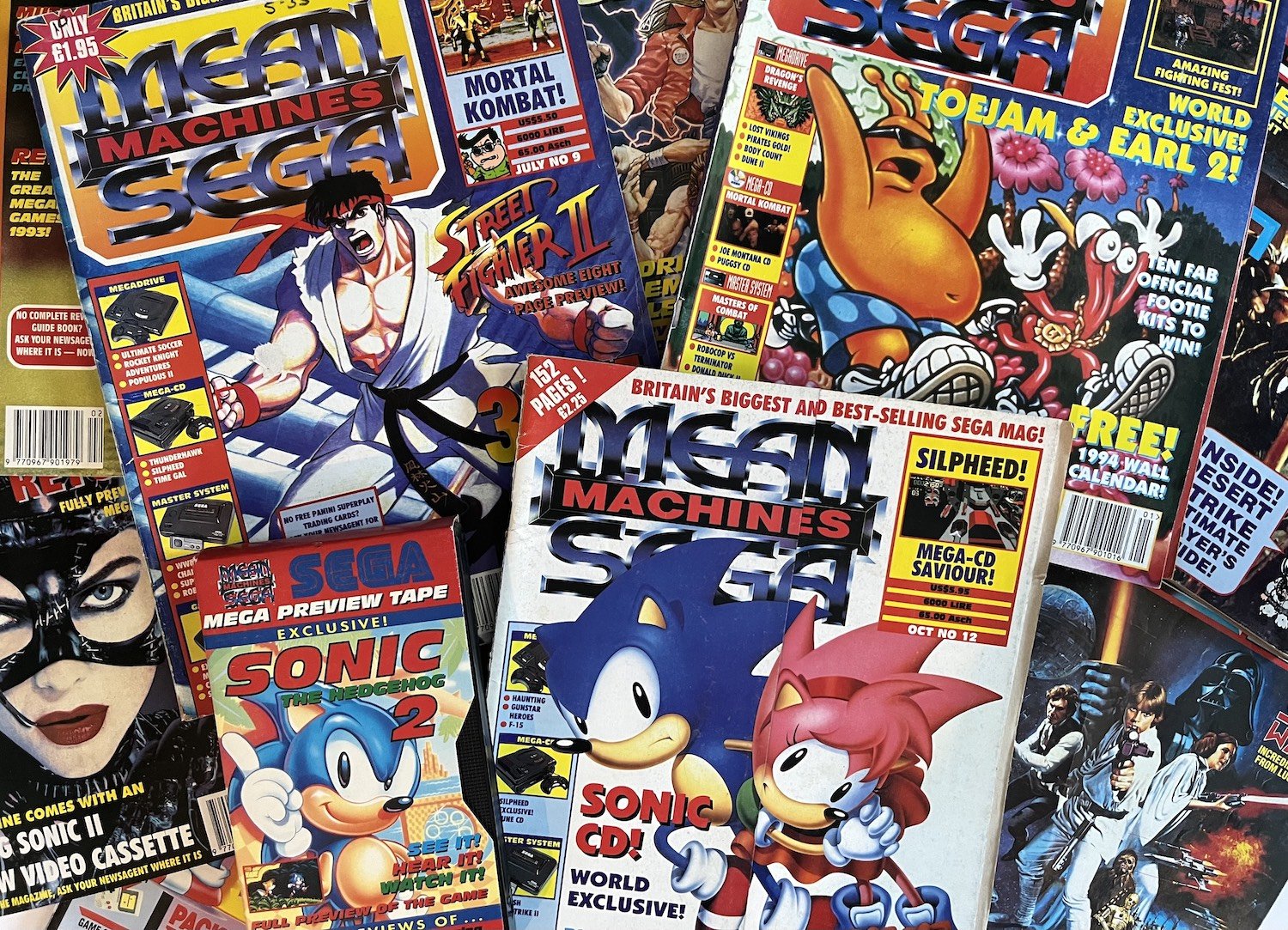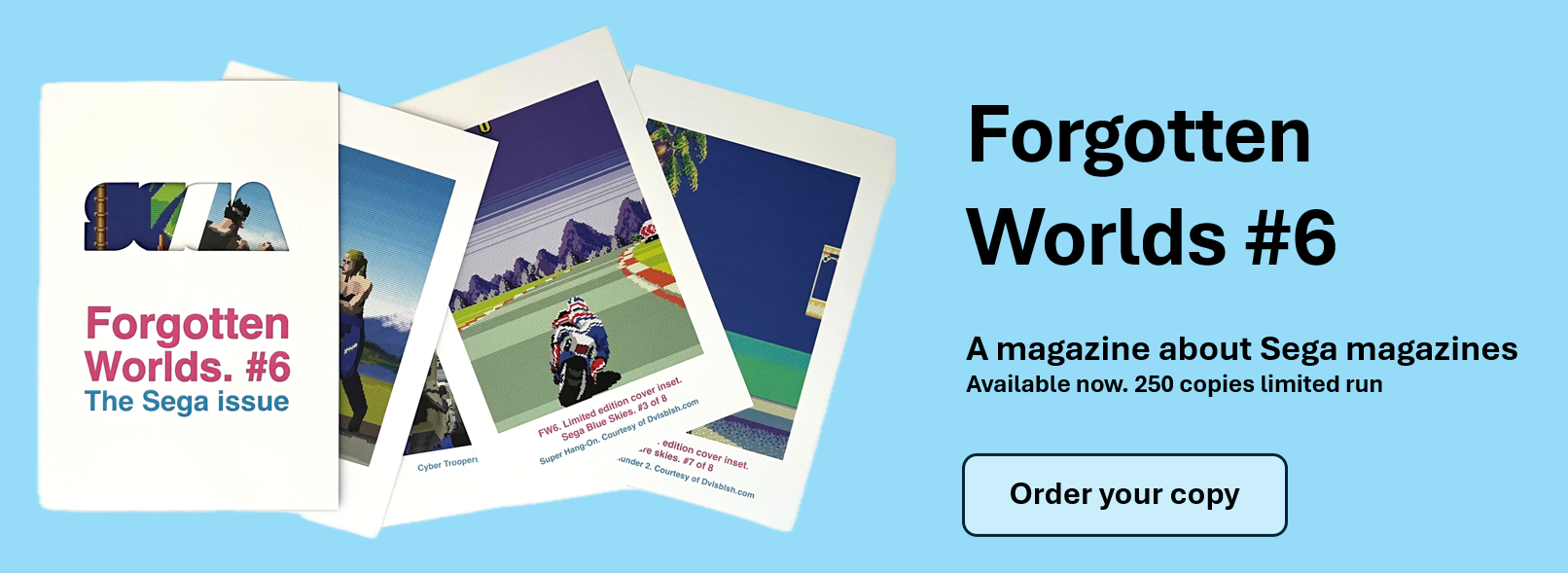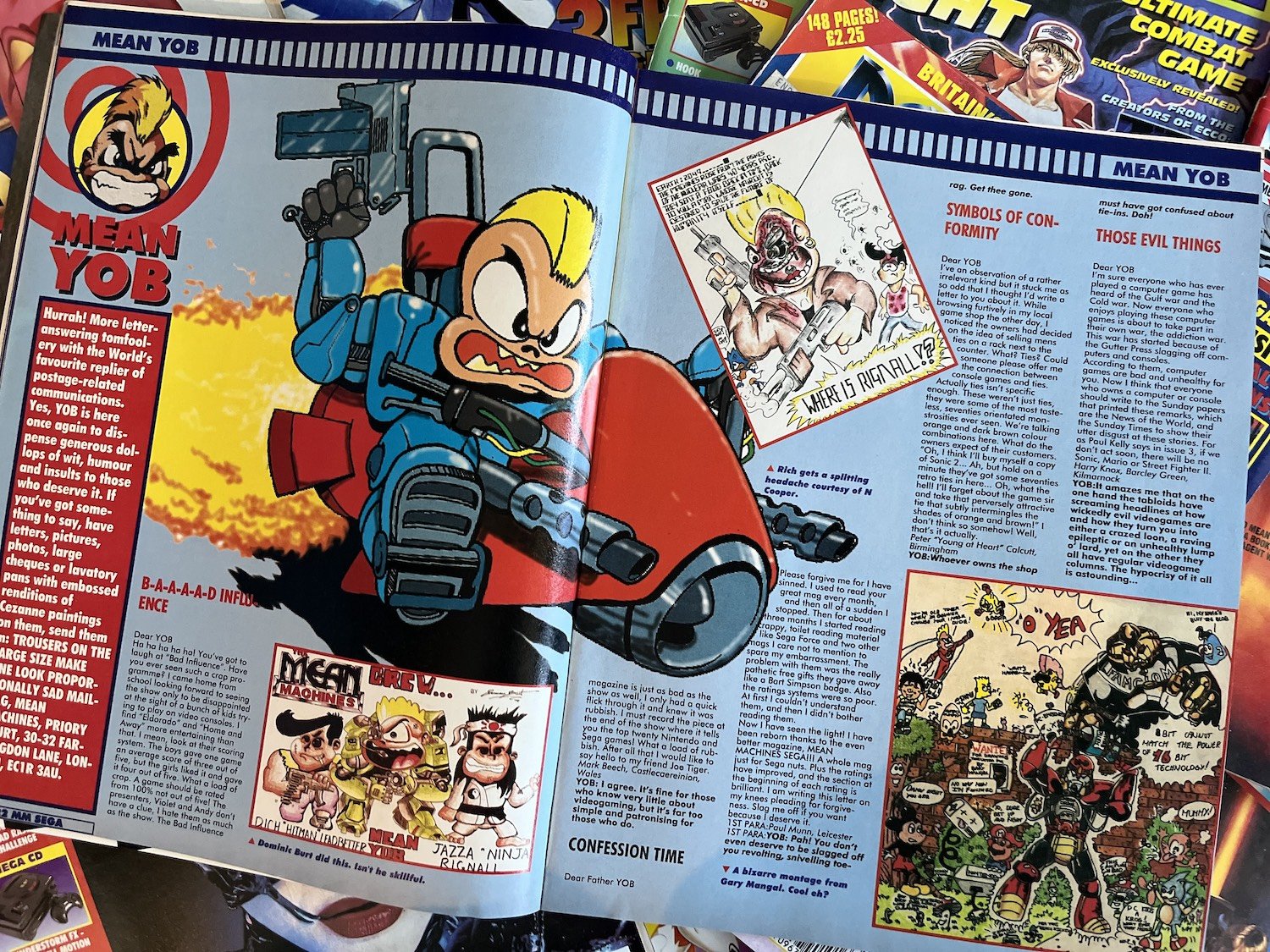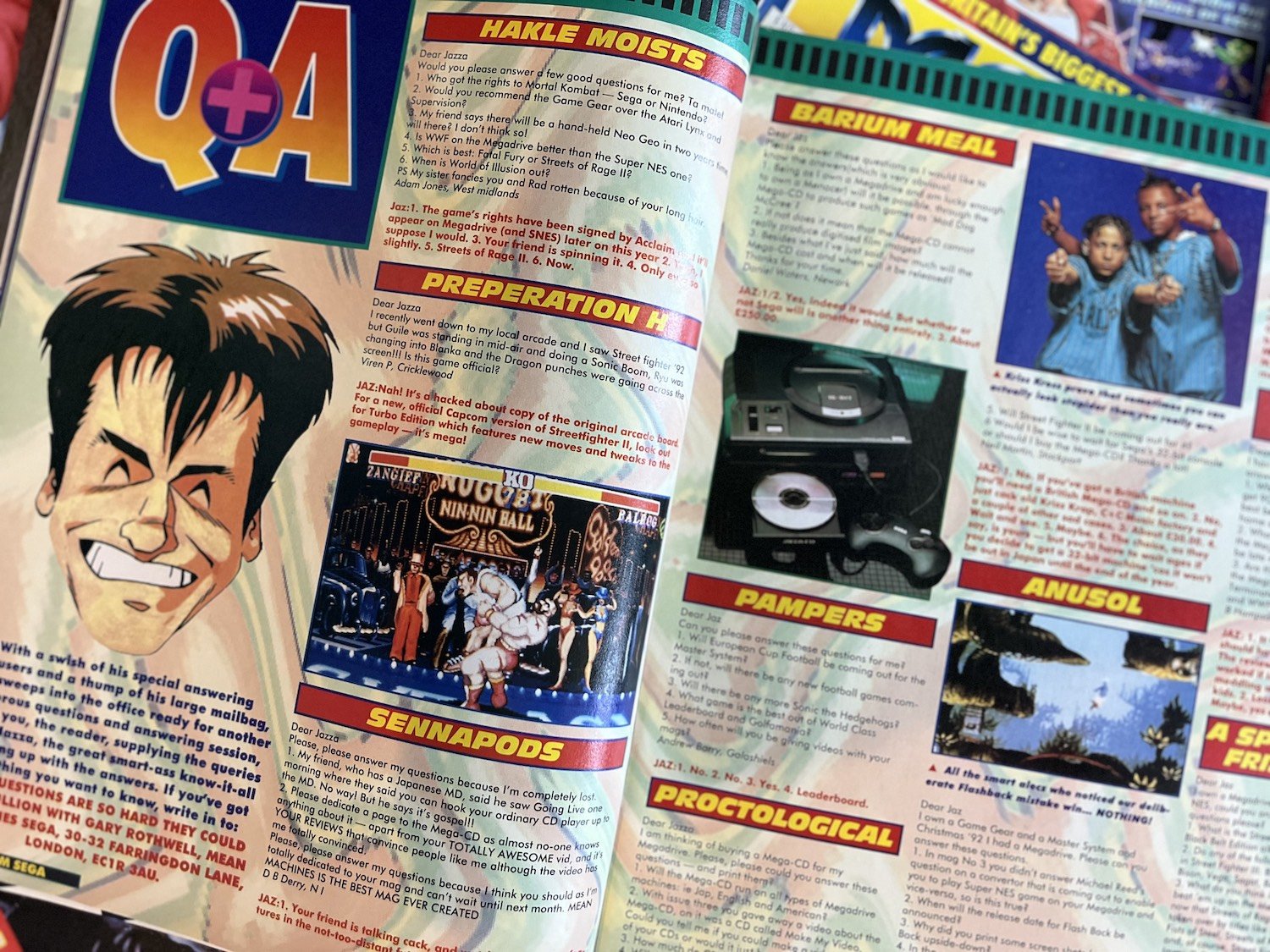Mean Machines Sega
…and the rise and fall of Sega in the 90s
I still remember my first job interview at a magazine. It was a weekly street press covering music, tours and events back when that was still a viable business model.
Anyway, I sat down with the publisher, and after some general back and forth he asked me what the purpose of this particular magazine was. I began my spiel about it being a, “trusted, comprehensive guide to events in the city…” and the guy conducting the interview cut me off with a laugh. He then proceeded to explain the facts of life.
I’m paraphrasing here, but it went something like this: “The purpose of this magazine is to sell advertising. All the articles, music reviews, listings and whatnot are just garnish to facilitate the sale of ads.”
Which is a long and convoluted way to say that publishing is a business. And while the writers and editors tasked with filling the pages may be dedicated professionals, management are only interested in ad revenue, market share, and how to improve the bottom line.
In 1992 the management at EMAP publishing came up with a brilliant way to achieve all three… What if they carved up the very successful Mean Machines magazine into two distinct publications - one for Sega fans, one for Nintendo. Two magazines would mean twice the ad space, twice the monthly sales, and twice the revenue.
Oh, and the fact EMAP had just secured the rights to publish an official Nintendo publication was the icing on the cake.
Which is how late in 1992 Mean Machines became two separate entities - Nintendo Magazine System and Mean Machines Sega.
Steve Merrett would go on to edit Mean Machines Sega for several years until its eventual closure in 1997. Which means he has a unique, inside view of Sega’s struggles, EMAP’s operations, and how it all came to a head in the pages of Mean Machines Sega.
Welcome to EMAP
Becoming the editor of a flagship EMAP publication isn’t the sort of job one just falls into, and Steve Merrett had a wealth of industry experience when he took over the reins from Julian ‘Jaz’ Rignall and Richard ‘Rich’ Leadbetter at Mean Machines Sega in 1994.
You can read more about Steve’s background in the accompanying interview, but the abridged version is he started-out with ST Action magazine, bounced around for a bit, and eventually joined EMAP where he would go on to write and edit for CU Amiga, MegaTech, Sega Magazine and eventually become the editor of Mean Machines Sega.
EMAP was a serious contender in the publishing industry at this time, with a large stable of gaming magazines under its belt. It was also a dank office space run on a shoestring budget.
As Steve recalls, “We were all based in Priory Court in Farringdon, London. The building was a shambles, but each of the five floors would play host to one or two mags. When I joined, The One and PC Review were on the ground floor, advertising were on the first, CU Amiga and Ace were on the second, marketing and MegaTech on the Third, and Mean Machines and Nintendo up on the fourth.”
“The fourth floor was the place to be, though,” continues Steve. “We had the likes of Jaz Rignall, Gary Harrod, Rich Leadbetter, Lucy Hickman, Radion Automatic, Andy McVittie, Gus Swann and the fantastic Paul Davies all cramped into a tiny area of desks. There was a narrow gaming room to one side where various broken TVs and consoles in need of repair lined one wall, and a massive Street Fighter 2 arcade machine dominated the other.”
“It was a fantastic time. Every one of the team was brilliant and contributed to the enthusiasm and love that shone through [in the magazines]. There was no fighting between formats as staff were shared across titles, so everyone got to see what everyone was playing and try everything themselves. But, yes, it was filthy. The whole building was a mess. But EMAP was made by the people there. Which the hierarchy never understood.”
Mean Machines Sega
The EMAP offices may have been a bit rough around the edges, but the money was rolling in thick and fast during the first half of the decade, as the arrival of 16bit consoles opened up the gaming market to a new generation of Sega and Nintendo fans.
Initially, at least, Mean Machines Sega was another success story for the publisher. The debut issue went on sale in October 1992 and featured an exclusive Sonic the Hedgehog VHS preview tape on the cover. The Christmas issue that rolled around a couple of months later was a bumper 180 pages.
Within six months each issue was selling almost 120,000 copies as Sega rode a wave of success in the UK and other PAL markets. With Sonic 3 on the horizon, the Mega CD starting to appear on shelves, the Game Gear holding its own and the Master System proving surprisingly resilient the future looked bright for both the magazine and Sega. It wouldn't last…
By the time Steve would take the helm the magazine’s circulation had halved, with monthly sales of approximately 65,000. That may have been a respectable number a few years back, but it was a far cry from the industry leading position that the Mean Machines’ brand had been known for.
So what happened?
The drop in circulation can be attributed to a number of factors, including the launch of rival publications, and internal issues at Sega, which were beginning to impact the brand’s appeal.
It wasn’t helped by EMAP’s decision to launch another Sega specific magazine…
Sega Magazine (official)
Sega Magazine made its debut in late 1993 with one major advantage over its various competitors - it was officially licensed. That meant it had more access to Sega than any of its rivals. Which translates to more exclusives, more insights, and more content.
While that’s potentially good news for readers, it also splinters the audience.
What had begun with Mean Machines magazine in 1990 had been cleaved off into separate Sega and Nintendo entities in 1992. The Sega side was further diluted in 1993, with both official and unofficial publications vying for attention on newsagents.
And that’s just within EMAP. Rival publishers were also pushing out their own publications, flooding the market with content as the industry prepared for the shift from 16bit to 32 bit.
All this corporate skulduggery at EMAP may have boosted overall readership numbers, circulation and ad revenue, but it also split the audience, and diluted what had made the original Mean Machines format so popular.
EMAP magazine circulation numbers
Very rough circulation numbers, and the decline of Mean Machines Sega
Circulation numbers sourced from Sega Retro
*Estimate based on Eurogamer article
What happened next?
It’s fair to say Steve Merrett had his job cut out for him when he took the reins in 1994.
The Mega Drive was in the twilight of its years, the Mega CD and 32X had under performed, and as the next generation battle swung into focus it became clear that the Sega Saturn was going to face stiff competition from Sony’s Playstation. A fact that Steve was acutely aware of.
“I knew the Saturn was going to struggle,” he explains. “The reason the Mega Drive flew was because Sega US had a lot more control, which led to loads of third-party games and a reason for people to buy it. With the 32x it was barely an upgrade and expensive for what it was, and then Japan took control of Saturn and it launched with a disappointing selection of titles as they wanted to control releases much more closely.”
“We'd got wind of Sony's plans for PlayStation and their charm offensive with publishers and knew of at least three times as many games on the way, so it was obvious that the writing was on the wall for Sega… I spoke to publishers on a daily basis and it was clear their focus was PlayStation as Sega was being so hard to work with.”
Things fall apart
The decision to split Mean Machines magazine into two separate publications has been criticised in the past. A common gripe is that neither Nintendo Magazine System or Mean Machines Sega managed to capture the spirit of the original. That’s subjective, although it’s a view that Julian ‘Jaz’ Rignall agrees with.
As he explained to Eurogamer, “Both Mean Machines Sega and Nintendo Magazine System were quality mags, but they essentially lost the irreverent, anarchic edge that the original Mean Machines had. New staff members came in and the office vibe changed somewhat, which was reflected in the way we wrote the magazines. It was like changing a band's members - things just weren't quite the same."
Fair enough, but from a corporate perspective things were a bit more clear cut. A magazine’s success comes down to two distinct numbers - circulation and ad sales. Both these numbers are closely tied to the success of the platforms being covered by a magazine.
In other words, if a particular system is going well, there’s a ready-made audience wanting to buy the associated magazines. But as the 90s rolled on, Sega’s market share continued to drop, and the audience continued to shrink. Which had a rolling impact on the specialist magazines dedicated to its platforms.
“It was only because Mean Machines Sega still had Mega Drive, Mega-CD, 32X and a few Saturn games to include that it maintained its decent issue sizes,” recalls Steve, “But Saturn games were becoming an afterthought for most publishers.”
At this point Steve took a step back, becoming the Managing Editor while Gus Swan assumed day-to-day editorial duties on Mean Machines Sega. The magazine would continue on until 1997, although its monthly sales had collapsed to about 20,000 copies at this point.
Meanwhile, Sega Magazine was rebranded Sega Saturn magazine, and would run until 1998.
Balance sheets and final days
“It isn't great to work on a title with no games,” says Steve. “I remember the last days of Sinclair User which was basically old budget reissues being reviewed, and it is soul destroying. Mean Machines Sega was the same. The calibre of games on the cover went down, as did the page count. It then only becomes a matter of time until it folds.”
Which brings us full circle, and back to my job interview way-back-when. Publishing is a business, and without a commercially successful console and the associated user base, Mean Machines Sega was living on borrowed time.
You could argue that a stronger performance from Sega during the second half of the 90s could have propped up the associated magazines, but this really isn’t about Sega.
It’s about the harsh reality of video game publishing back in the 90s, and the fact that writers, editors and audiences were, ultimately, at the mercy of mercurial corporations who only ever saw the content as garnish to their balance sheets.
Still, we’ll always have that Sonic 2 promo video…
….














